Tapsa Temple (마이산 탑사)
17.1Km 2025-01-08
367, Maisannam-ro, Maryeong-myeon, Jinan-gun, Jeonbuk-do
+82-63-433-0012
Tapsa Temple is famous for its over 80 stone pagodas. Each pagoda has a name, meaning and role. The pagodas are made of natural stone. They range in x_height from 1 meter to 13.5 meters and in shape from conical to straight. Two twin pagodas behind Daeungjeonhall are the tallest, standing three times the x_height of an average adult.
Maisan Hwaeomgul Cave (마이산 화엄굴)
17.2Km 2025-01-10
367, Maisannam-ro, Jinan-gun, Jeonbuk-do
+82-63-430-8751
Maisan Mountain has two major peaks made of sedimentary rocks; these peaks are said to be ‘couple peaks’ and cannot be found anywhere else. Sut Maibong (alt. 667 meters) is said to be the male peak while the slightly larger Am Maibong (alt. 673 meters) is deemed the female peak. In the early Joseon period the mountain was named ‘Sokgeumsan,’ but began to be called ‘Maisan’ after the 12th year of King Taejong, who commented that the two peaks resembled horse ears (‘maisan’ meaning ‘horse ears’). All along Maisan Mountain, visitors will find small crater-like rock cavities that are formed by prolonged weathering. These unique geological features, called ‘tafoni,’ are of great academic value.
Inside Hwaeomgul Cave, visitors can observe medicinal water that flows up from underground all throughout the year. It is widely believed that once you drink the water, especially on the days of the Spring and Autumn Equinox, you will soon have a son and be blessed by the mountain spirit. Even today, many women who have difficulty conceiving visit the mountain to pray to the mountain spirits for their heart’s desire—the gift of a child. The region in which Maisan is located is the birthplace of many talented people and national heroes, which some say is proof of the blessings of the mountain and its extremely powerful spirit.
Maisan Mountain Tafoni Terrain (마이산 타포니지형)
17.2Km 2024-04-07
255 Maisan-ro, Jinan-eup, Jinan-gun, Jeonbuk-do
Tafoni terrain refer to clusters of small caves resembling bombarded peaks. On the southern slope of Ammaibong Peak in Maisan Mountain, various-shaped honeycomb caves are widely spread out. These formations are believed to have been formed during the 4th Ice Age and subsequently shaped by frost action. Such caves are commonly found along coastlines.
Okjeongho Lake (옥정호 (물안개길))
17.3Km 2024-04-07
Unam-myeon, Imsil-gun, Jeonbuk-do
+82-63-640-4082
Okjeongho Lake is a manmade lake that was formed when Seomjingang River Dam was built. The 763-square kilometer drainage area is filled with 430 million tons of water. The picturesque lake is a popular photo spot for photographers across the nation with wet fog reflected under the morning sun being one of the most beautiful sight. A lakeside walking trail is also a popular attraction.
Eunsusa Temple (은수사)
17.3Km 2024-04-07
406, Maisannam-ro, Jinan-gun, Jeonbuk-do
+82-63-433-2502
The temple located upon Maisan Mountain was called Sangwonsa Temple during the early Joseon dynasty and was later known as Jeongmyeongam Hermitage. According to the Korean Language Society, the temple began to be called Eunsusa (meaning ‘Silver Water Temple’) after King Taejo (the founder of the Joseon dynasty) visited the temple and remarked that the water flowing nearby was as clean and smooth as pure silver.
The temple is home to the largest known Beopgo (Buddhist drum used for rituals), which was produced in 1982. A stone sculpture and a statue of Granny Samsin (a goddess that looks after babies’ births and keeps them healthy) also stand at the temple. However, the temple’s most treasured assets are its two Natural Monuments: Emerald Gaiety (a climbing vine, Natural Monument No. 380) and the Cheongsil Pear Tree (Natural Monument No. 386). Reverse icicles, though found all over the mountainsides, are most readily and abundantly found in the Eunsusa Temple area.
Honbul Literary House (혼불문학관)
17.4Km 2024-04-07
52, Nobongan-gil, Namwon-si, Jeonbuk-do
+82-63-620-6788
"Honbul" is an epic novel written about three generations of women from the Namwon Lee clan living under the rule of the Japanese in the 1930s. The word "honbul" literally means "a torch of the soul" and refers to the indomitable spirits of the women that persevered through hard times. The novel was written by the late Choi Myeong-hee over a period of 17 years and remains a much celebrated novel.
Sangsin Village and Nobong Village in Namwon-si are the hometowns of the author and served as the background of the novel "Honbul." Located inside the village is a traditional Korean house that is an example of yangban (noble class) architecture and the Honbul Literary House, where visitors have an opportunity to gain a deeper understanding of the novel "Honbul." At the entrance of Nobong Village stands a pair of jangseungs (Korean traditional totem poles), welcoming visitors inside.
Maisan Provincial Park (마이산도립공원)
18.0Km 2024-04-07
126-3, Danyang-ri, Jinan-eup, Jinan-gun, Jeonbuk-do
+82-63-430-8751
Maisan Provincial Park is a rocky mountain composed of two great peaks, Ammaibong (687.4 meters) and Sumaibong (681.1 meters), and dozens of smaller peaks. These peaks have a variety of names depending on the season. In spring, the mountain provides sweeping panoramic views for its cherry blossoms, and cosmos and silver grass in fall. The Eunsusa Temple, Geumdangsa Temple, and Tapsa Temple with its 80 stone pagodas are all worth exploring, enhancing the experience of the area.
Erang Hanok Stay (이랑한옥스테이)
18.1Km 2024-12-23
1571-6 , Indeok-ro, Imsil-gun, Jeonbuk-do
+82-10-3119-5300
Irang Hanok Stay stands in Deokchi Village, Imsil-gun, Jeollabuk-do. The village has the Seomjin River flowing past it and mountains all round it, so this is a benign and beautiful spot. Accomodation consists of four renovated hanok, each let out as a single house. Each house has one ondol room, one bedroom, a kitchen/living room, and a bathroom. The numaru(raise floor) and toenmaru(wooden veranda) are depending on the room.
Cooking strong smelling food inside is not allowed, but there is a barbecue space in the yard. An outdoor swimming pool is open in the summer.
Gudam Village (구담마을)
18.4Km 2024-04-07
49, Cheondam 1-gil, Imsil-gun, Jeonbuk-do
+82-63-644-9051
Located at the beginning of the Seomjingang River, the steep banks in Gudam Village are covered in maehwa (plum blossoms) in white and red. While strolling along the 3-kilometer-long path of the riverside that connects Gudam Village to Cheondam Village, tourists will be impressed by the beautiful scene created by the plum and cherry blossoms. The village became more and more famous thanks to its cozy ambience created by the Seomjingang River, plum blossoms and Zelkova at the mouth of the village, attracting visitors to enjoy a walking trip. The village has also served as a filming location for movies, including the film "Spring in My Hometown (1998)."
Andeok Health and Healing Village (안덕 건강 힐링 체험마을)
18.5Km 2025-10-23
72 Jangpa-gil, Gui-myeon, Wanju-gun, Jeonbuk-do
Andeok Health and Healing Village is nestled near a valley at the foot of Moaksan Mountain in Wanju. As Korea's first health and healing experience village, it offers experience programs and health and wellness classes. Health experience programs and health and wellness classes are professionally designed in collaboration with a traditional Korean medicinal clinic in Andeok Village. Therefore, it offers visitors opportunities to learn quality information and experience specialized programs.
Andeok Health and Healing Village consists of a healing experience center, Yochodang House, a food experience center, a traditional sauna, a well-being restaurant, and a convention hall. For accommodations, seven Hwangtobangs (red-clay cottages) are available as well as studio-type rooms at Soo Pension. These accommodation facilities are open to visitors regardless of whether they participate in programs run by the village or not.
The village's signature experience programs include the red-clay sauna where the floor is heated in the traditional manner. The walls are made of red clay mixed with traditional herbal medicinal water. When heated, the sauna effectively removes waste from the body. Other signature programs include making injeolmi (bean-powder-coated rice cakes) by cooking rice and pounding the rice dough using a mallet; and harvesting seasonal crops (e.g., potatoes, sweet potatoes, and corn)
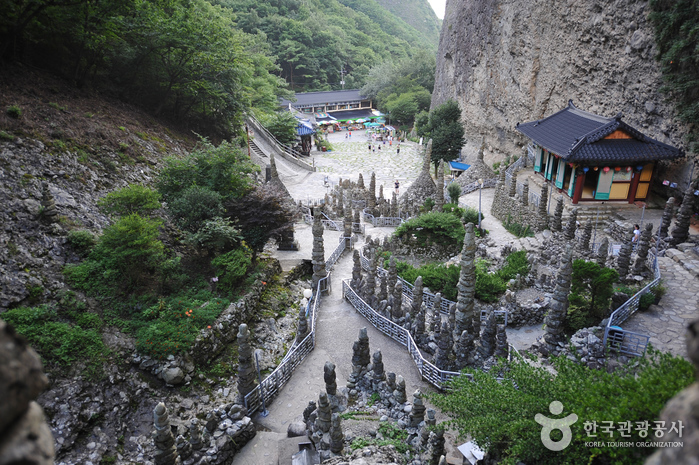
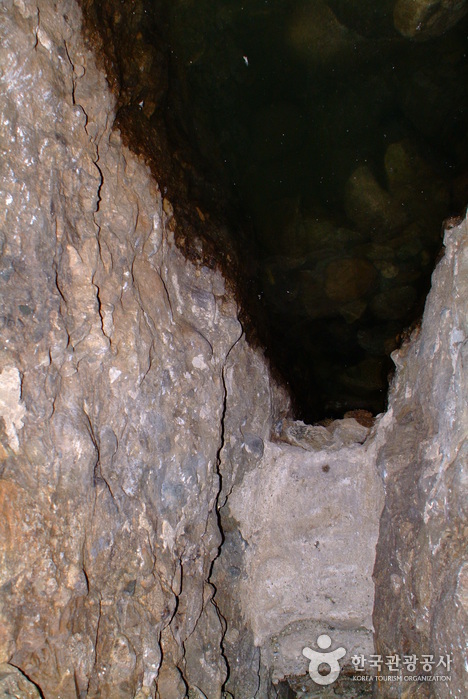
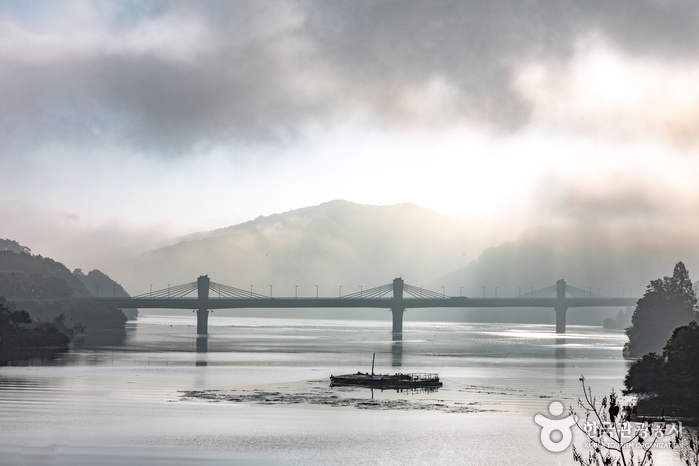
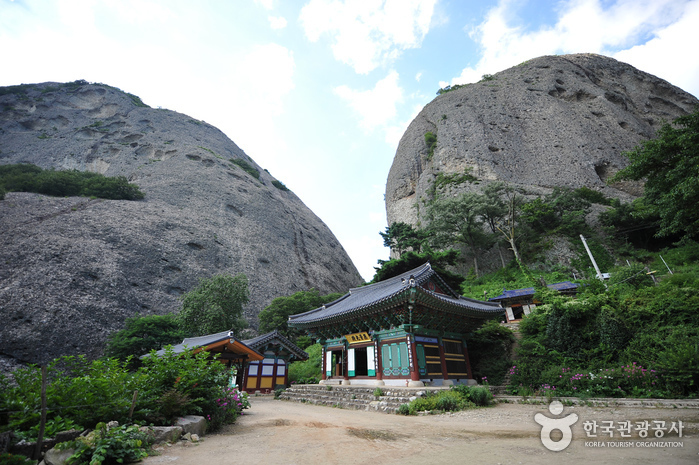
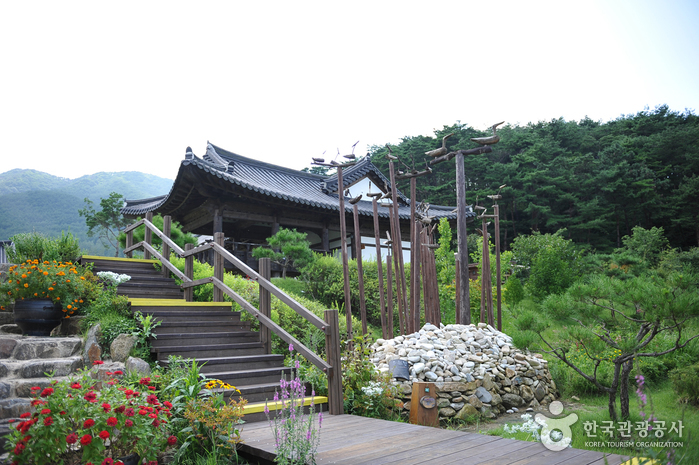

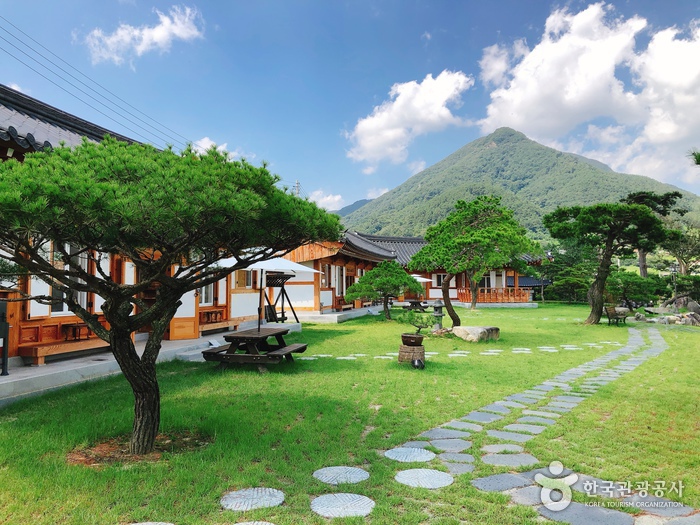
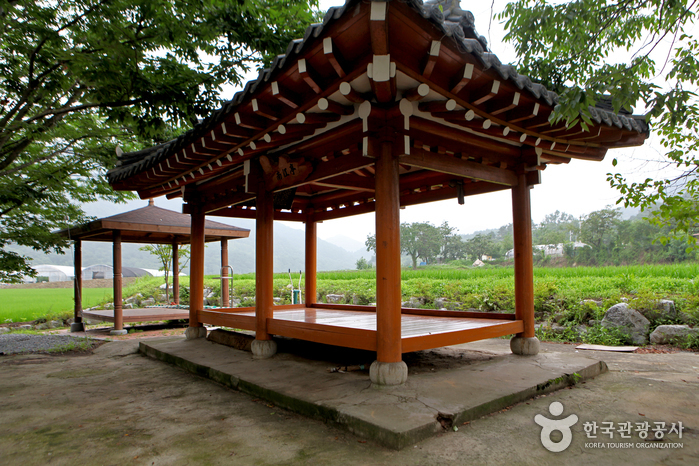
 English
English
 한국어
한국어 日本語
日本語 中文(简体)
中文(简体) Deutsch
Deutsch Français
Français Español
Español Русский
Русский